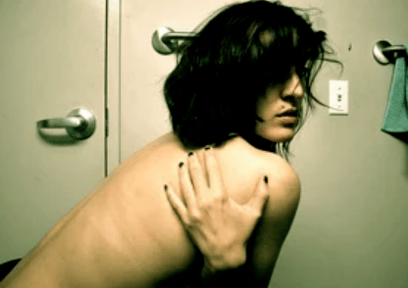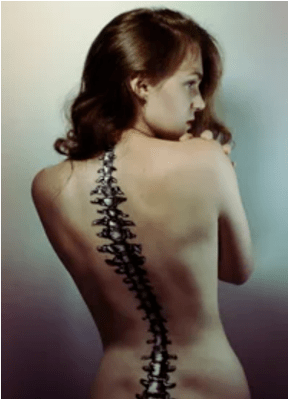Osteochondrosis is a condition in which a number of disorders in the joint cartilage of a dystrophic nature are observed. Osteocondrosis may appear in different joints, but the most often osteochondrosis affects intervertebral discs. If we consider the position of the disease, then osteochondosis is customary to be divided into the chest, cervical, lumbar. Osteocondrosis is a disease that causes back pain in about 80% of cases. In the case of the complication of the osteocondrosis, the hernias of the intervertebral records sometimes occur in the head, in the limbs and in other organs. The most common is lumbar osteochondosis that causes leg pain. Many people complain about the manifestations of cervical osteochondrosis, in which their hands and head hurt. In the form of the chest of the disease, pain occurs in the internal organs.

The causes of osteochondosis
The initial cause of osteochondosis of the spine is the ease of a person. There are many different theories regarding the causes of osteocondrosis. Such, for example, are a predisposition of a hereditary nature, injuries and violation of metabolic processes in the body. The determination of the causes of this disease is complicated by the fact that the disease manifests itself in people of different ages, different physical and physical development level.
There is also a theory according to which the cause of the osteocondrosis is the deposition of the salts in the spine. However, experts claim that an illusion is to some extent. And it is the correct analysis of the causes of the disease that is the main effective treatment of the disease.
With osteochondrosis, the nature of the disease is non -inflammatory, degenerative dystrophic. In the process of development of the disease, the nutrition of the tissue is disturbed, its structure is reborn. People who constantly have active physical activity have more durable and elastic bone tissue. This is due to the fact that the disks of the spine in an adult of a person do not have their own vases, therefore oxygen and nutrients in the discs come from the tissues that are nearby. A similar process can only be full in the case of active blood circulation, which is possible only in the process of constant intensive muscle functioning.
Each intervertebral disc is two parts. At the center of the disc there is a gelatinous nucleus, which makes the disc elastic and surrounds its durable fibrous ring. If the food of the intervertebral discs worsens, then the structure of the organic compounds -dust can be destroyed. Due to a decrease in humidity in the disc, it becomes fragile. And if the spine is overloaded, the jacket is divided into fragments. Consequently, its elasticity is significantly reduced. Fibrosis rings also lose strength. These phenomena become a starting point for the manifestation of osteocondrosis in humans. The manifestation of degenerative distrus changes in the spine is calcified by discs, ligaments, damaged capsules. A similar phenomenon is the last phase of the development of the disease.
Unfortunately, the inverse process after these changes in the spine is almost impossible. Therefore, the main task of treating osteochondrosis is to maintain the current position.
Basically, the manifestations of osteochondrosis become more pronounced in people after reaching thirty and five years. Furthermore, the more elderly one becomes, more manifestations of the disease is observed. However, recently, with back pain complaints, they are increasingly young to doctors.
The causes of such an early occurrence of osteochondrosis are mainly a very weak physical activity, problems with posture, as well as a twisted vertebral column, flat feet and obesity. To date, the main causes of osteocondrosis are considered the following: the following:

- preparation of a hereditary nature;
- Problems with metabolic processes, intoxication, infection;
- the presence of excess weight, irrational nutrition (small deficiency of consumption of liquids of trace elements);
- the presence of spinal lesions, its curvature, improper posture, flat feet;
- existence in bad ecological conditions;
- inactive lifestyle;
- Lift of regular weight, work for a long time for a long time, an activity in which a person often repeats sudden movements, curves and flexion of the body;
- Too strong physical activity, overload of the spine due to foot diseases, inconveniences in the process of wearing shoes and load during pregnancy;
- The sudden resolution of constant training by people who practice sports, stress, mischievous smoke.
Symptoms of osteochondrosis
In people who are sick of osteochondrosis, tangible back pains appear first of all. Sometimes this pain is accompanied by numbness, as well as by the sensations of the pains in the limbs. If the therapy of osteochdrosis does not start in time, then the person quickly loses weight, has the atrophy of the limbs. With physical exercises and load, as well as in the breeding process of too heavy objects, in the process of sneezing and cough, the pain can become more intense. In the patient, osteochondosis reduces the volume of movements, muscle cramps occur.
Cervical osteochondrosis occurs due to the characteristics of the structure of the cervical column. The vertebrae of the cervical region have significantly smaller dimensions than the vertebrae of the other spine. As a result, cervical osteochondrosis occurs due to the constant load on the neck. The symptoms of cervical osteocondrosis are expressed as follows: pain in the hands, neck, shoulder, headache may occur. This type of disease is characterized by vertebral artery syndrome. With the manifestation of this syndrome, a person feels the presence of noise in his head, "flies" flashes in front of his eyes and a head turns. Multi -colored spots in front of your eyes can occur, in parallel a person has severe pain in a pulsating character. The symptoms of cervical osteocondrosis sometimes resemble the signs of Angina Pectoris, but the patient does not have a change in the heart in the study.
In patients with osteochondrosis of the thoracic spine, the patient feels pain in the chest. Pain can be given to the region of the heart, as well as other internal organs. The pains of the osteochondosis lumbosacral spinals feel back pain, which can give to the feet, sacred, to the pelvic organs. Their nerve roots are interested, sensitivity is disturbed, reflections can decrease and hypotension may appear.
Diagnosis of osteochondrosis

The specialist establishes a preliminary diagnosis of osteochondrosis already during the patient's initial examination. As a rule, an inspection is carried out by a doctor-neuropathologist. Generally, the patient comes to the reception with pain of pain, as well as deformation or limitation of mobility. The patient's vertebral column is performed in an erect, lying and sitting position, the doctor examines it both on the move and at rest. During the exam, the doctor necessarily pays attention to the posture of a person, the characteristics of his physique, the characteristics of the spine, the relief of the muscles that are located near the spine. It is possible to integrate the results of the patient's inspection with information on the fact that the spinal deformation, in which pain is found, in addition to determining the degree of intensity. In the sensation process, it is also determined how tense the muscles are next to the spine, because muscle tone accompanies most of the diseases and injuries. In order to determine the size of the movements of the different parts of the spine, the possibilities of decline are studied. After the diagnosis of osteochondrosis, computerized tomography, radiography, magnetic resonance imaging is often used. These methods allow you to find out which level of damage to the spine, to determine if there are hidden pathologies and specify the diagnosis. The doctor can determine which therapy tactics choose to be the most efficient tactics to be the most effective.
Treatment of osteocondrosis
The treatment of cervical osteocondrosis, as well as other forms of the disease and their complications, is performed using conservative methods, whose purpose is to eliminate pain, restore the functions of the cerebrospinal roots, as well as preventing dystrophic phenomena in the spine structures.
If all conservative treatment methods do not bring the adequate effect and there are special indications for this, surgical methods for treatment of osteochdrosis are sometimes prescribed to patients. The volume of surgery depends directly on what they are influenced by the spine and the intensive symptoms of the disease. The severity of the disease also depends on the duration of the therapy. As a rule, the active phase of the treatment with conservative methods occupies mainly about 1-3 months. After surgery, the patient is restored about a year. After the start of conservative treatment, many patients with osteochondrosis have an increase in pain. This is a reaction of muscles and other formations to treatment.
If pain syndrome is too serious, it can be stopped relatively quickly using physiotherapy methods, drugs and the use of a complex of exercises specially designed for patients with osteochondosis. It is important to take into account the fact that an important factor that affects the effectiveness of the treatment is the correct behavior of the patient, his adequate attitude towards the need to adhere to the method of treatment developed. For this reason, perseverance, patience and desire to defeat the disease are important. It has been shown that the most effective is the conduct of conservative treatment and recovery after surgery in the sanitors, as well as in medical centers specialized in the treatment of this disease. In the presence of the necessary equipment, as well as qualified doctors, the complex treatment will be the most effective and effective.
The complex therapy in the treatment of cervical osteochondosis necessarily includes physiotherapy exercises, massage, physiotherapy, manual therapy, reflexology and use of drugs.

One of the most important impact methods on the state of the human musculoskeletal system are physiotherapy exercises. The patient regularly performs a certain amount of exercises, during which the decompression of the nerve roots gradually occurs, the correction of the muscle corset, increases the flexibility of ligaments and muscles. Special exercises for cervical osteochondrosis also allow us to guarantee effective prevention of further development of the disease. The main condition is the regularity of all exercises.
When using physiotherapy, osteochondrosis is treated with the help of physical factors: magnetic fields, low frequency, ultrasound, etc. This technique allows you to reduce the rehabilitation period after surgery, as well as strengthening the effects of different drugs. With the help of the massage, you can relieve muscle tension, improve blood flow and the strengthening effect in general.
To remove acute pain, manual therapy is used. This technique also allows you to adjust the posture. The pain is also raised using spinal elimination: the procedure performed on special equipment. With reflexology, the reflective areas of the human body are exposed and can significantly improve the effects of other methods.
During the exacerbation of the disease, the treatment is used with the help of drugs with which inflammation is removed, the pain is stopped, metabolic processes are activated. Medicines are administered intravenously or intramuscularly.
The most tangible treatment results are observed when using different methods overall. However, in the treatment of cervical osteocondrosis and other forms of the disease, only the attending physician should prescribe them.






































